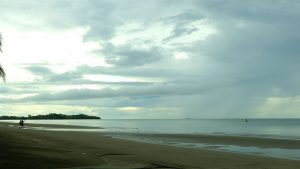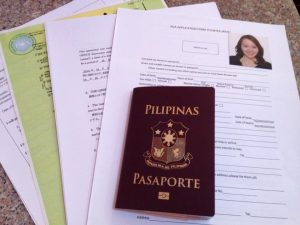In Asia, Philippines is one of the top destinations. It is often known for its unique culture and environmental amenities that offers a variety of electrifying adventures and memorable experiences. No wonder why it is known as a tourism magnet in Asia.
The Philippines is blessed with more than 7,100 islands where its long, white beaches and blue seas seem endless. Its mountains are surrounded by the greenest rice fields in its foothills and its rainforests are a home to some endemic animals.
When you plan to travel to the Philippines for the first time, there’s more to know about the country before hitting the confirm button of your flight booking. To ensure that your travel will be smooth and totally relaxing, here are the key things you need to know first:
1. The weather
There are generally two types of seasons in the country: wet and dry. Most of the time, you’ll experience sunny (dry) days – the reason why others say that the country has endless summer. But to tell you honestly, summer in the Philippines doesn’t mean that there will be no rain during the said period. Hence, it won’t mean happy days all the time. Philippines regularly experiences typhoons that others are really destructive. The only good thing is that the country is considerably large but not totally landlocked and the typhoon might only be affecting certain regions only.
When planning to visit the country soon, always read weather forecasts prior to booking your trip. This is the safest and a highly recommended step so you won’t be disappointed the whole time you’ll be in the country.
2. The People
The people in the Philippines, referred to as Filipinos, are known worldwide to be friendly, hospitable, and happy people. Visiting the country’s top destinations such as Palawan, Baguio or Boracay, you’ll find that locals are really warm, kind, thoughtful and welcoming. Airport & hotel staff is very attentive to your needs and welfare. However, just like other countries where there exist rude people, this too is true in the Philippines. So be careful who you deal with especially outsiders.
3. The Language
Tagalog is the country’s primary language. However, English is widely spoken as it is a major component of its school curriculum starting from preparatory years until tertiary level. Traffic signs, street signs, and store names or displays are also printed in English/American alphabet. That’s why, you don’t have to worry on spending for additional payment for translators.
4. The Food
Two of the most famous culinary identities of the Filipinos are the Adobo and Sinigang. Adobo is one of the Philippine dishes commonly served in all occasions (the reason why others call it as the country’s national dish). How adobo is prepared? Typically, pork or chicken is marinated with vinegar before being stewed and simmered with soy sauce, garlic and bay leaf for around 20-30 minutes or until the meat is cooked.
On the other hand, sinigang is a sour soup dish. Fish, pork, chicken, or shrimp plus a variety of vegetables such as beans and eggplant are mixed to a souring agent such as vinegar, tamarind or kamias. The mixture is simmered for about 10 minutes or until vegetables are cooked.
Sinigang and adobo are surely not to be missed in your forthcoming Philippines visit!
5. Currency used
The currency in the Philippines is the Peso (PhP). An approximate conversion of your 1 US dollar is 50 pesos which simply means that for a few dollars, you can buy more. You can find a lot of money changers in its malls and hotels. Just be careful to choose legit money changers as there are cases of expats/tourists being scammed.
6. Accommodations
There are many types of accommodations in the Philippines being offered at a very reasonable price. You can find many high-end accommodations at a lower cost compared to other countries.
You can refer to travel blogs or hotel reviews if you want to have a sneak peek of the hotel prior to reservation. Also, in destinations less visited by tourists, you may not find any “luxurious” accommodations in the web yet but others actually exist. You can be more updated if you access social media sites such as Instagram and Facebook as more Filipinos prefer to market their business or product there.
Check out our previous post Expats’ Guide: Accommodation in the Philippines for Backpackers
7. Attire
One of the very worthy reasons why women prefer to go beaching in the Philippines is its tolerance for tourists and even locals to show some skin in public places. So flaunting the curves of your body is not an issue here. Although there are selected places in the country where this is not allowed, majority of its cities and even rural areas allow women to wear skirts, shorts, sleeveless and body-hugging dresses. It is also normal for tourists to see hotel staff wearing uniforms (which are quite short than normal) but still looks professional, sophisticated and respectable.
8. Traffic
Traffic in Philippines’ megacities especially in Manila and Cebu is one of its highly tackled economic issues. It is considerably one of the nation’s evils. Tourists coming to the country can experience this just a few minutes after leaving the airport. According to some researches, many investments and incomes are lost due to the significant time each person has to spend in the middle of the road.
A highly recommended advice for tourists is to bring a power bank with you while travelling to the country because it not just kills time, it will also extend your phone or camera’s life to capture wonderful, Instagrammable moments.
Owing to the country’s majestic islands, beaches and unique tourist destinations, it is no doubt why it is one of the top destinations in Asia. During your stay, you’ll always feel at home with the friendly, respectful and accommodating Filipinos! And don’t forget to experience its unique culture displayed via its various festivities such as Sinulog, Panagbenga or Maskara Festival honoring the bountiful harvests and blessings.
It’s really more fun in the Philippines!




